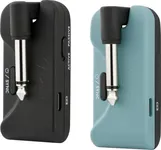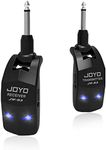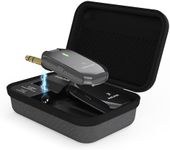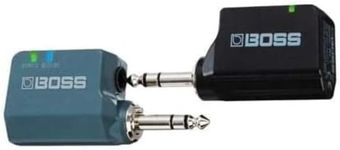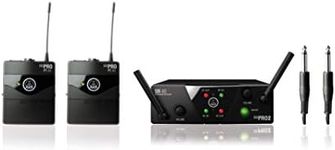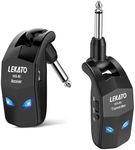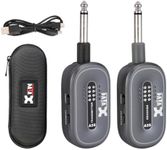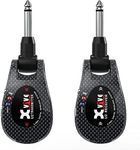Buying Guide for the Best Guitar Wireless Systems
Choosing the right guitar wireless system can greatly enhance your performance by providing freedom of movement and eliminating the hassle of cables. When selecting a wireless system, it's important to consider several key specifications to ensure you get the best fit for your needs. Understanding these specs will help you make an informed decision and find a system that suits your playing style and environment.Frequency RangeThe frequency range of a wireless system determines the range of frequencies it can operate on. This is important because it affects the system's ability to avoid interference from other wireless devices. Systems typically operate in UHF (Ultra High Frequency) or VHF (Very High Frequency) bands. UHF systems are generally preferred for their better range and less interference, but they can be more expensive. If you play in crowded environments with many wireless devices, a UHF system might be the best choice. For less crowded areas, a VHF system could suffice.
RangeThe range of a wireless system indicates how far you can move from the receiver while maintaining a clear signal. This is crucial for performers who move around a lot on stage. Ranges can vary from 50 feet to over 300 feet. If you perform on large stages or in big venues, opt for a system with a longer range. For smaller venues or home use, a shorter range may be adequate.
Battery LifeBattery life refers to how long the transmitter can operate on a single charge or set of batteries. This is important for ensuring your performance isn't interrupted by a dead battery. Battery life can range from a few hours to over 10 hours. If you have long performances or multiple gigs in a day, look for a system with longer battery life or one that uses rechargeable batteries. For shorter sessions, a system with a shorter battery life may be sufficient.
LatencyLatency is the delay between when you play a note and when it is heard through the amplifier. Low latency is crucial for maintaining the timing and feel of your performance. Latency is usually measured in milliseconds (ms). Systems with latency under 5ms are generally considered good, while anything over 10ms might be noticeable and potentially disruptive. If precise timing is critical for your playing style, choose a system with the lowest possible latency.
Number of ChannelsThe number of channels a wireless system offers determines how many different frequencies you can choose from. This is important for avoiding interference from other wireless devices. More channels provide greater flexibility in crowded environments. Systems can offer anywhere from a few channels to over 100. If you play in areas with many wireless systems, opt for a system with more channels. For less crowded environments, fewer channels may be sufficient.
Build QualityBuild quality refers to the durability and robustness of the wireless system's components. This is important for ensuring the system can withstand the rigors of live performances and frequent use. Look for systems with sturdy, metal housings and reliable connectors. If you frequently perform live or travel with your gear, prioritize a system with high build quality. For occasional use or home practice, a less rugged system may be adequate.
